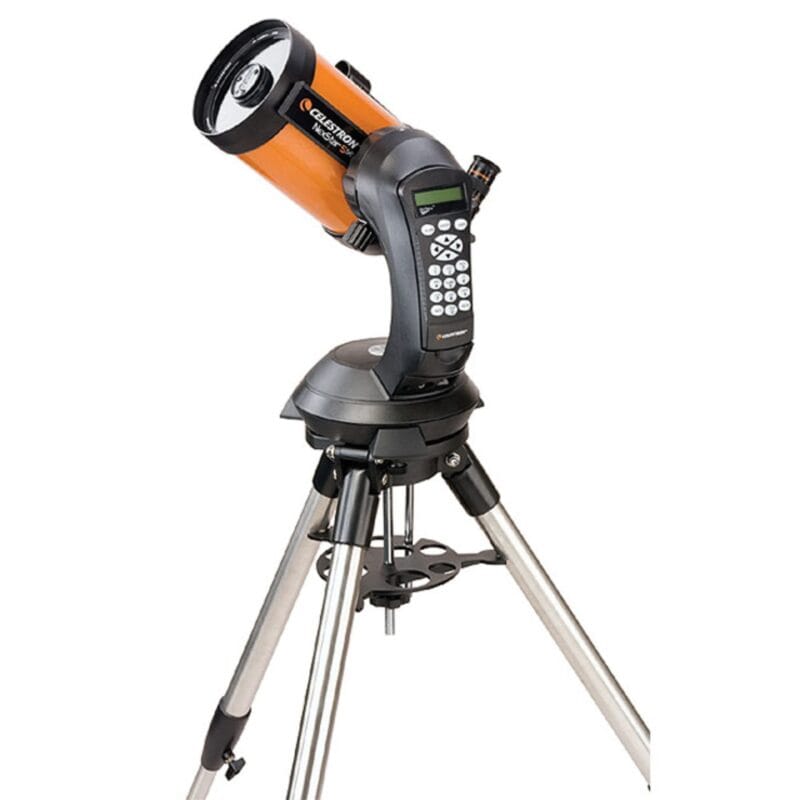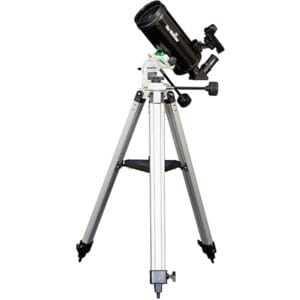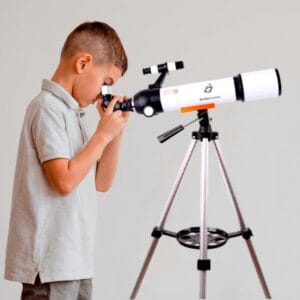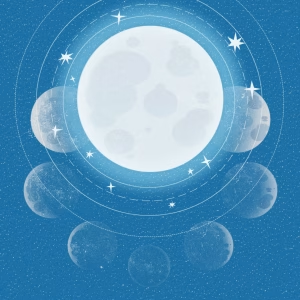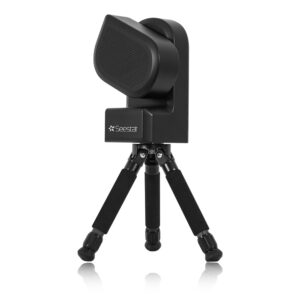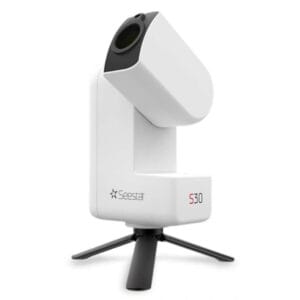What do you see through a telescope? It's one of the first questions beginners ask. Expectations are often high: colorful nebulae, rings of Saturn, deep galaxies. And while a telescope gives you access to a completely new universe, it's important to understand what you'll actually see with your own eyes. This blog post will give you a realistic idea of what to expect - and how to get the most out of your telescope.
What can you see as a beginner?
A telescope is not a magic camera like the James Webb's. What you see depends on three things: your telescope, the sky conditions and your experience. Here are the main objects you can observe as a beginner:
✓ The Moon
The Moon is without a doubt the most beautiful object for beginners. With almost any telescope, you can instantly see sharp craters, mountain ranges and seas. Even at low magnification, the detail is impressive - especially during a half-full moon, where shadows are long and relief becomes readily visible.
Tip: Use a moon filter to prevent glare.
✓ The planets
The brightest planets can be seen with the naked eye in good conditions. With a telescope you can observe this, among other things:
- Jupiter: the four Galilean moons, cloud bands, sometimes the Great Red Spot
- Saturn: the famous rings, sometimes also Titan (the largest moon)
- Mars: at opposition you can see the red color, polar caps and sometimes dark spots
- Venus: shows phantoms like the moon
- Mercury: visible as small crescent during elongation, but troublesome
Want to observe planets specifically? Then also read: Watching planets with a telescope: what to expect?
Deep-sky objects: star clusters and nebulae
With a larger telescope and dark sky, you can see further into the universe. Consider:
- Star clusters, such as the Pleiades or M13 in constellation Hercules
- Mists, such as the Orion Nebula (M42) or the Ring Nebula (M57)
- Galaxies, such as Andromeda (M31), but often faint and without color
Note: colors as on NASA-pictures you can't see with your eye. Visually, deep-sky objects are usually grayish. Your brain is not good at perceiving color in low light.
The Sun (only with special filter!)
With a special solar filter for the front of your telescope, you can safely observe sunspots. Never just look at the sun: it is dangerous and can cause permanent eye damage.
What don't you see?
- No color as in pictures: your eye sees mostly shades of gray in the dark
- No details in poor seeing: air vibrations distort the image
- No deep-sky at full moon or in the city: light pollution impairs
How do you get more out of your telescope?
- Choose the right eyepiece: a 10 mm or 6 mm eyepiece is ideal for planets
- Wait for good conditions: stable air and little moisture are crucial
- Use filters: a color filter (such as #82A) increases contrast at Jupiter and Venus
- Provide a dark location: the darker, the more you see
- Let your telescope acclimate: prevent heat distortion due to temperature difference
Tip: Want to know what all these terms mean? Check out our explanation in How does a telescope work? For absolute beginners
What telescope do you need?
For visual observation, a telescope with reasonable aperture (at least 70 mm) and good mount is essential. Dobsonians offer great value for their price and are ideal for beginners. Refractors are good for the Moon and planets. Smart telescopes like the Seestar are better suited for astrophotography than visual use.
Looking for a telescope? Check out our guide: The 3 best telescopes for beginners in 2025
Conclusion
What you see through a telescope is unforgettable provided you know what to expect. From craters on the Moon to Saturn's rings and even distant star clusters, the universe is at your fingertips. But as with any new skill, the better you understand what you're doing, the more you'll see. But if you don't start, you also won't know what you're missing or how it works.
Want to know more or in doubt about which model to choose? Ask our telescope expert via the chat at the bottom right or check out our selection guide for beginners.

